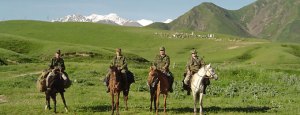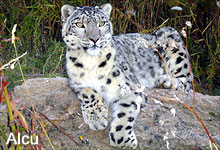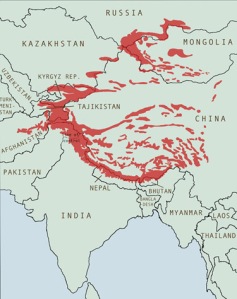 We can be cautiously optimistic about news from Doha in Qatar where the UN Convention on International Trade in Endangered Species (CITES) has been meeting. Seems an agreement has been reached on wildlife trade which could mean that trading in illegal tiger parts will be treated as seriously as dealing in arms and drug trafficking. The agreement states the EU and tiger range countries will use INTERPOL to share intelligence against poachers and traders.
We can be cautiously optimistic about news from Doha in Qatar where the UN Convention on International Trade in Endangered Species (CITES) has been meeting. Seems an agreement has been reached on wildlife trade which could mean that trading in illegal tiger parts will be treated as seriously as dealing in arms and drug trafficking. The agreement states the EU and tiger range countries will use INTERPOL to share intelligence against poachers and traders.
The news has implications for countries not acting on their people illegally trading in snow leopard parts too. All parties to CITES have agreed to monitor the illegal trade in these endangered cats along with the tigers.
 Without the co-operation of major enforcement communities it’s been difficult to make headway despite all snow leopard range countries having laws against the killing and sale of snow leopards.
Without the co-operation of major enforcement communities it’s been difficult to make headway despite all snow leopard range countries having laws against the killing and sale of snow leopards.
“There have been many promises this week, but getting countries to actually use these new enforcement tactics will be the real test of the commitment to ending tiger trade, and saving the species”, said Debbie Banks, Senior Campaigner at the Environmental Investigation Agency, and Chair of the Species Survival Network’s Big Cat Working Group.
“Time is running out for tigers and other big cats. Tiger range countries and consumer nations need to work together to reduce demand for their parts and stamp out the illegal tiger trade”, said Avinash Basker, Legal Consultant to the Wildlife Protection Society of India.
 Tiger and snow leopard conservationists have another piece of weaponry now, but it will still require action and followup. This means more money for CITES, which is currently only funded to around $5m per year, a pittance when we consider all the flora and fauna that’s endangered and the support that developing nations especially, need to protect their endangered species.
Tiger and snow leopard conservationists have another piece of weaponry now, but it will still require action and followup. This means more money for CITES, which is currently only funded to around $5m per year, a pittance when we consider all the flora and fauna that’s endangered and the support that developing nations especially, need to protect their endangered species.



 Posted by Sibylle and Rex
Posted by Sibylle and Rex  The Environmental Investigation Agency (EIA) recently conducted undercover investigations into the illegal big cat skin and bone trade in China and found it easy to get tiger, snow leopard and other leopard skins.
The Environmental Investigation Agency (EIA) recently conducted undercover investigations into the illegal big cat skin and bone trade in China and found it easy to get tiger, snow leopard and other leopard skins. See
See 











